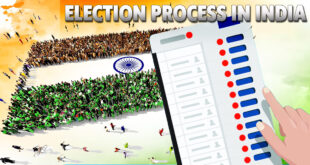The Assembly elections in Maharashtra and Haryana appear to be of limited interest elsewhere, and commentaries focus on personalities. The advantageous position the Bhartiya Janata Party (BJP) finds itself in is credited to Prime Minister Narendra Modi, Home Minister Amit Shah and Maharashtra Chief Minister Devendra Fadnavis; the decline of the Congress is blamed on Rahul Gandhi. Underlying the BJP’s rise, however, is its success in enforcing new terms of engagement between the dominant castes and the rest. Religious polarisation significantly explains the BJP’s success, but equally noteworthy is caste polarisation. The BJP’s strides in Haryana and Maharashtra are built by mobilising resentment against two traditional dominant castes, the Jats and the Marathas, respectively. New alignments Organised caste groups tend to corner a disproportionate share of power for themselves and hinder the Hindutva project of creating a Hindu vote bank, even when they are within the fold. Mr. Modi’s innovation to Sangh politics, Hindutva 2.0, harvested the discontent against dominant castes into a sustained, universal force that continues to propel his rise. His Gujarat model of politics, among other things, also involved the decimation of the Patel network that had controlled the BJP when he took over as Chief Minister in 2001. The Patels rebelled several times but are gradually reconciling to the new reality of their reduced role in the larger Hindu vote bank. A similar process is under way in Maharashtra and Haryana. Dominant castes in this context are not to be confused with the upper castes, early converts in BJP strongholds, and now vanguards of the Hindutva revolution across the country. Yadavs in Bihar and Uttar Pradesh and Jatavs in U.P. expanded their share of power rapidly through the 1990s and established dominance within their respective spectrum of the Backward Castes and Dalits. The Marathas, Jats and Patels are not upper castes and their dominance preceded the Mandal-era but liberalisation in the 1990s multiplied their power as they were quick to seize new opportunities. In Haryana, besides controlling the Indian National Lok Dal, the Jats took over the Congress also by early 2000; all Maharashtra parties were dominated by Marathas. Weaker caste groups resented the situation but could do little individually, and then Hindutva 2.0 aggregated them and offered them an ideology. Leaders from non-intimidating social backgrounds became the faces of such alliances — Manohar Lal Khattar, the Haryana Chief Minister, is a Khatri, and Mr. Fadnavis is a Brahmin, both minuscule communities. The pattern is the same in other States that the BJP dominates, with rare exceptions. Olive branch to loyalists Tightening the leash on dominant castes, the BJP expanded its base among the backward castes and Dalits, and remains focused on that project. Home Minister Shah, who is also the BJP president, in his first speech in Maharashtra said Mr. Modi was working to address the issues of deprived and backward classes “by setting up an OBC commission, which the previous governments failed to do in the last 70 years”. The BJP and Jan Sangh, which used to be labelled the party of traders, zamindars and princes, has come full circle, caring little for these groups. The implementation of the Goods and Services Tax and the relentless tax activism are instructive. Dominant communities reacted to their relative political marginalisation in multiple ways, but most pointedly in demands for reservations by the Marathas, Jats and Patels. Autonomous caste-family fiefdoms of Patels, Marathas, Jats, Yadavs and Jatavs are being dismantled by popular politics and the State machinery, but the BJP also offers an olive branch to them. Appearing sympathetic to their demands and accommodating them in positions, the BJP is engaging with the dominant castes on terms that it sets. Hindutva 2.0 shrank the role of dominant castes in the making of a majority but Opposition parties cannot turn their back on them as they are the most forceful opponents of the BJP. The other resistance to the BJP comes from sub-national identity politics, such as Trinamool Congress chief Mamata Banerjee’s politics in West Bengal and religious minorities, that become effective only in areas where they are concentrated as in Kerala and Punjab. Assertion of linguistic and regional identities alone cannot sustain an opposition to Hindutva as the situation in Gujarat and Maharashtra demonstrates. Getting the right coalition of caste is hence critical, and that is dependent on rationalising the role of the dominant castes. There can be no meaningful opposition to the BJP in U.P. or Bihar without Yadavs or Jatavs.
Source : https://www.thehindu.com/todays-paper/tp-opinion/the-dominant-caste-dilemma/article29735510.ece
 Chinmaya IAS Academy – Current Affairs Chinmaya IAS Academy – Current Affairs
Chinmaya IAS Academy – Current Affairs Chinmaya IAS Academy – Current Affairs



